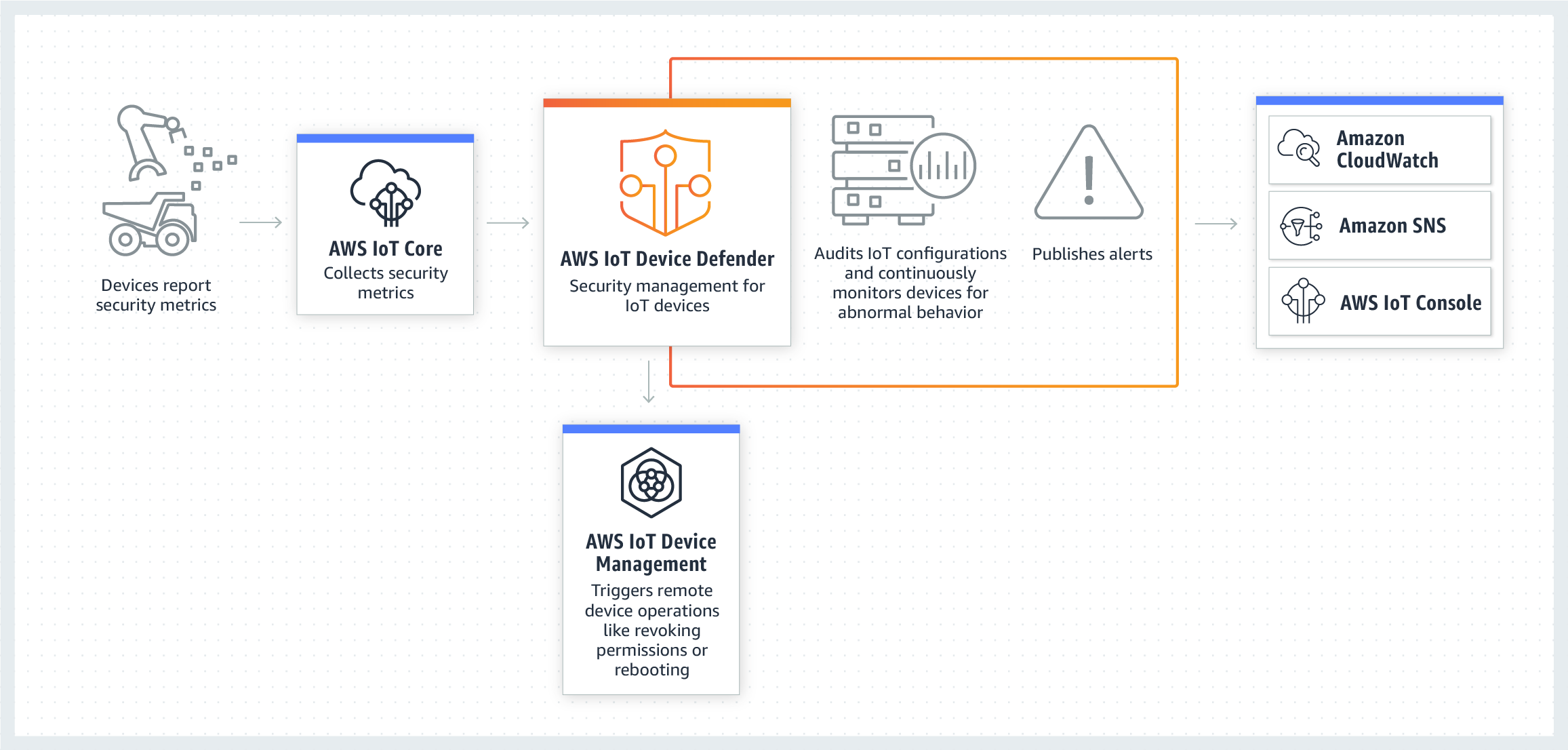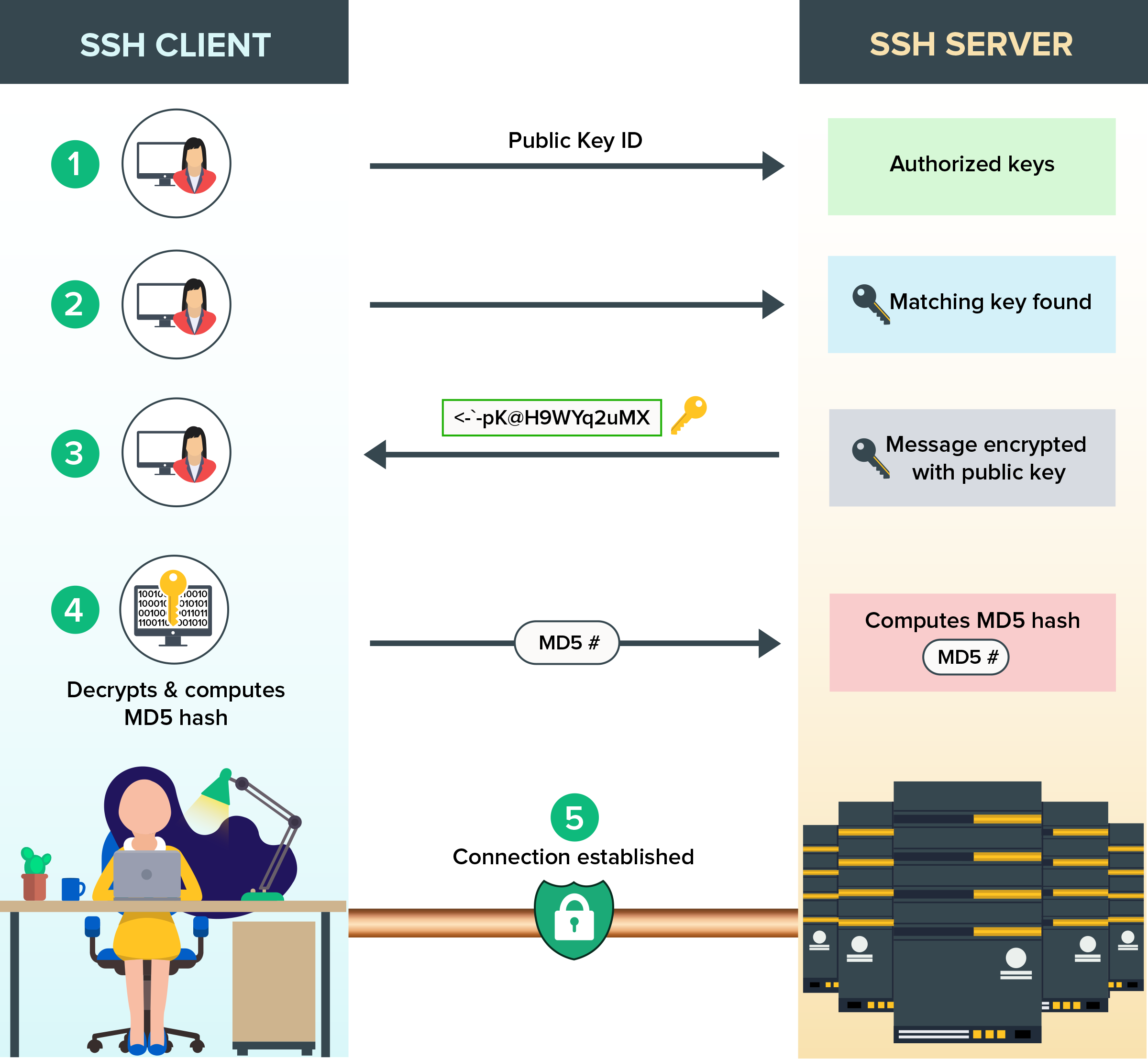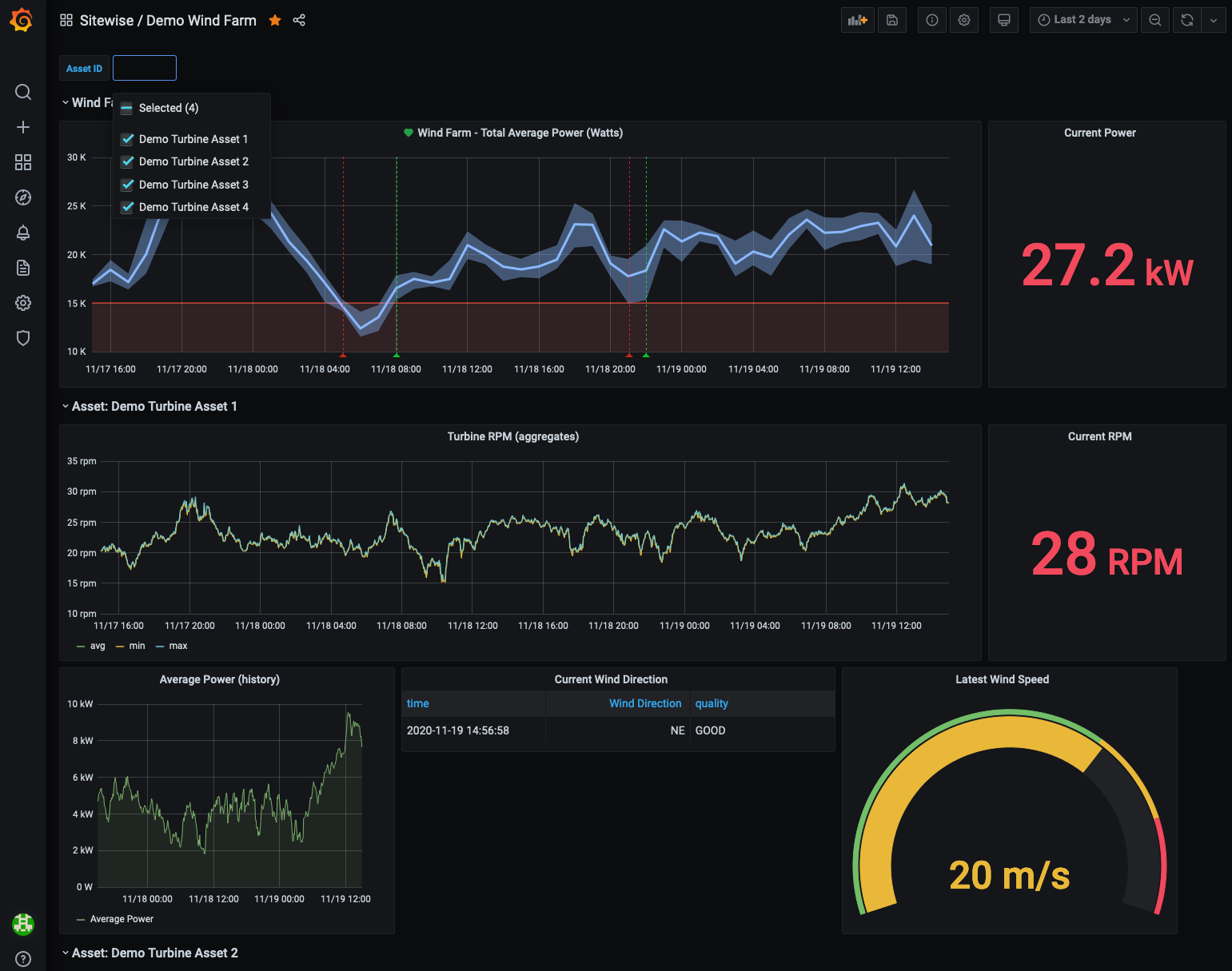Unlock IoT Remote Access: SSH Over AWS Secrets Revealed!
Ever found yourself locked out, unable to reach your IoT device shimmering in the digital distance? Gaining seamless, secure access to your IoT devices from anywhere is no longer a futuristic fantasy, but a present-day necessity!
Imagine a world where troubleshooting a remote sensor doesn't necessitate expensive site visits, where managing a fleet of interconnected devices is as straightforward as checking your email. This is the promise of IoT remote access, a capability rapidly transforming industries from agriculture to manufacturing. But the path to realizing this promise isn't always smooth. Configuration complexities, security concerns, and network limitations can create frustrating roadblocks. This article serves as your comprehensive guide, dismantling these obstacles and empowering you to navigate the intricate landscape of IoT remote access with confidence. Whether you're grappling with connection issues, seeking to bolster security protocols, or aiming to streamline device management, the solutions lie within.
| Category | Information |
|---|---|
| Concept | IoT Remote Access via SSH |
| Technology Stack | AWS IoT, SSH, MQTT, VPN |
| Primary Use Case | Securely managing and troubleshooting remote IoT devices. |
| Key Benefits | Reduced operational costs, enhanced security, streamlined device management. |
| Challenges | Firewall restrictions, network complexities, security vulnerabilities. |
| Solutions | Secure tunneling, VPN configurations, AWS IoT Device SDK. |
| Example Platform | SocketXP IoT Platform |
| Related Technologies | AWS Greengrass, AWS IoT Device Management. |
| Further Reading | AWS IoT Official Website |
The quest for reliable IoT remote access often leads to Secure Shell (SSH), a protocol renowned for its encryption capabilities and secure command-line interface. When combined with the robust infrastructure of Amazon Web Services (AWS), SSH provides a potent mechanism for interacting with IoT devices dispersed across geographical boundaries. However, the integration isn't always plug-and-play. Issues such as misconfigured firewalls, network address translation (NAT) complexities, and authentication failures can quickly derail your efforts. Furthermore, accessing IoT devices over the internet introduces significant security considerations. Exposing SSH directly to the public internet is akin to leaving your front door unlocked. Therefore, implementing robust security measures, such as key-based authentication, port forwarding restrictions, and intrusion detection systems, is paramount.
One of the most common challenges encountered is establishing a secure and reliable connection through firewalls. Firewalls, by design, block unsolicited inbound traffic, which is often the case when attempting to initiate an SSH connection to a device behind a firewall. Bypassing these restrictions typically involves employing techniques such as port forwarding or reverse SSH tunneling. Port forwarding entails configuring the firewall to forward specific ports to the internal IP address of the IoT device. While seemingly straightforward, this approach can introduce security vulnerabilities if not implemented carefully. Reverse SSH tunneling, on the other hand, establishes an SSH connection from the IoT device to a publicly accessible server, allowing you to then connect to the device through the tunnel. This method offers enhanced security as it eliminates the need to expose the device directly to the internet.
Another hurdle arises from the dynamic nature of IP addresses. Many IoT devices reside on networks with dynamically assigned IP addresses, making it challenging to consistently reach them. Dynamic DNS (DDNS) services provide a solution by associating a static domain name with the dynamically changing IP address of your network. By configuring your IoT device to update its IP address with the DDNS service, you can always access it using the static domain name, regardless of its current IP address.
AWS offers a comprehensive suite of services that can significantly simplify the process of establishing secure IoT remote access. The AWS IoT Device SDK provides libraries and tools that streamline the connection of devices to the AWS IoT platform. This SDK handles much of the underlying complexity of establishing secure communication channels, allowing you to focus on the application-level logic. The AWS IoT Device Gateway acts as a central hub for managing and communicating with your IoT devices. It provides features such as device authentication, authorization, and message routing.
To leverage AWS for secure IoT remote access, you'll typically follow these steps: First, create an AWS account and configure the AWS Command Line Interface (CLI). Next, create an IoT thing, which represents your IoT device in the AWS IoT registry. Generate the necessary security credentials, including a certificate and private key, and provision them on your IoT device. Configure your device to connect to the AWS IoT Device Gateway using the AWS IoT Device SDK. Once connected, you can use the MQTT protocol to send and receive messages between your device and the AWS cloud. To establish an SSH connection, you can create an EC2 instance in AWS and configure it as a bastion host. The bastion host acts as a secure gateway to your IoT devices, allowing you to connect to them via SSH through the bastion host.
The process of setting up an EC2 instance as a bastion host involves several steps. Launch an EC2 instance with a suitable operating system, such as Amazon Linux 2. Configure the security group to allow SSH access from your IP address or a specific range of IP addresses. Generate an SSH key pair and store the private key securely. Connect to the EC2 instance using SSH and install any necessary software, such as the AWS CLI. Configure the EC2 instance to forward SSH connections to your IoT devices. This can be achieved using SSH tunneling or a more sophisticated solution such as AWS Systems Manager Session Manager.
AWS Systems Manager Session Manager provides a secure and auditable way to access your EC2 instances without the need to open inbound SSH ports. Session Manager uses the AWS Systems Manager Agent (SSM Agent) to establish a secure connection between your local machine and the EC2 instance. This eliminates the need to manage SSH keys or configure bastion hosts. To use Session Manager for IoT remote access, you'll need to install the SSM Agent on your EC2 instance and configure the necessary IAM permissions. Once configured, you can use the AWS CLI to start a Session Manager session and then use SSH to connect to your IoT devices through the session.
Beyond the core infrastructure, security remains paramount. Implement multi-factor authentication (MFA) for all AWS accounts and SSH access. Regularly rotate SSH keys and certificates. Employ intrusion detection and prevention systems to monitor for suspicious activity. Enforce the principle of least privilege, granting users only the minimum necessary permissions. Consider using a security information and event management (SIEM) system to centralize security logging and analysis.
The SocketXP IoT platform offers another approach to establishing remote SSH access to IoT devices. SocketXP provides a secure SSL/TLS VPN tunnel that allows you to connect to your IoT devices behind NAT routers or firewalls without the need for complex configurations. SocketXP simplifies the process of setting up remote access and provides a user-friendly interface for managing your IoT devices. To use SocketXP, you'll need to install the SocketXP agent on your IoT device and create a SocketXP account. Once configured, you can use the SocketXP client to connect to your IoT device through the secure VPN tunnel.
Troubleshooting connection issues often involves a methodical approach. Start by verifying network connectivity. Ensure that your IoT device has a stable internet connection and can reach the AWS IoT Device Gateway or the SocketXP servers. Check firewall rules to ensure that they are not blocking the necessary traffic. Verify that the security credentials are correctly configured and that the device is properly authenticated. Examine the device logs for any error messages that might provide clues to the root cause of the problem. Use network monitoring tools to analyze the network traffic and identify any bottlenecks or anomalies.
When dealing with "IoT remote SSH over internet android not working" issues, consider the specific challenges posed by the Android environment. Ensure that the SSH client application is properly configured and has the necessary permissions. Verify that the Android device has a stable internet connection and is not behind a restrictive firewall. Check for any conflicting applications or services that might be interfering with the SSH connection. Consider using a VPN client on the Android device to establish a secure connection to the network where the IoT device is located.
The benefits of using SSH for remote IoT access extend beyond mere connectivity. SSH provides a secure and encrypted channel for transmitting data between your device and the cloud. It enables you to remotely manage and configure your IoT devices, automate tasks and workflows, and control user permissions and access. SSH also facilitates secure file transfer, allowing you to remotely upload and download files to and from your IoT devices.
Setting up IoT remote access with SSH, especially on AWS, demands meticulous attention to detail and a thorough understanding of networking and security principles. By leveraging the tools and services provided by AWS, and by adhering to best practices for security, you can establish a robust and reliable solution for managing your IoT devices from anywhere in the world. This includes configuring devices to securing communication channels, enabling a seamless experience.
In the realm of IoT, the power to remotely access and manage devices is a game-changer. Whether you choose to build your own solution using AWS services or opt for a platform like SocketXP, the key is to prioritize security, reliability, and ease of use. By mastering the art of IoT remote access with SSH, you'll unlock the full potential of your connected devices and drive innovation across your organization.
The AWS IoT Device SDK simplifies connecting to AWS IoT and interacting with services by offering tools and libraries. When setting up your device, you need the AWS IoT endpoint, which is the AWS IoT service's address in your region. On the remote device, an IoT device agent connects to the AWS IoT device gateway and is set up with an MQTT topic subscription. More information can be found in connect a device to the AWS IoT device gateway.
Consider an SSH daemon for creating secure tunneling SSH sessions. This is one example of a destination application. To access a remote device, you need an IoT application to connect to the AWS IoT device gateway. It should also listen for new tunnel notifications via MQTT, creating an isolated network environment for your IoT devices. Setting up SSH on AWS involves creating an Amazon EC2 instance, setting up the security group, and making SSH keys. Start an Amazon EC2 instance.
The Socketxp IoT platform offers remote SSH access to IoT devices behind a NAT router or firewall. This is done over the internet using secure SSL/TLS VPN tunnels. A service like AWS IoT Device Management simplifies the onboarding, organization, monitoring, and remote management of IoT devices. AWS Greengrass extends AWS to edge devices, which allows for local computation, messaging, and data caching. These services combined with SSH create a strong ecosystem for secure IoT remote access.
After the VPN is set up and there are no connection issues, you can connect to your network safely and access your IoT device through SSH. This is similar to being on your local network. Using SSH for remote IoT access has many benefits. Firewalls are commonly used to protect access to IoT devices. However, it's difficult to manage devices at remote sites that are behind firewalls. Troubleshooting devices involves sending technicians to connect to those devices on site, increasing the complexity and cost of device management.
Setting up IoT remote access with SSH on AWS involves configuration and securing devices. Using firewalls is a common way to protect and secure access to iot devices. Yet, its challenging to access and manage devices deployed at remote sites, behind firewalls that block all inbound traffic. Troubleshooting devices can involve sending technicians onsite to connect to those devices. This increases the complexity and the cost of device management. For device communication and management and automating tasks and workflows as well as for managing user permissions and access control;



Detail Author:
- Name : Prof. Helene Lesch III
- Username : tstreich
- Email : marquis56@gmail.com
- Birthdate : 1987-02-28
- Address : 1348 Runolfsdottir Throughway Riverview, ND 49156
- Phone : 1-628-969-8631
- Company : Corwin LLC
- Job : Oil Service Unit Operator
- Bio : Ut deserunt molestias delectus mollitia consequuntur tempora veniam. Ut quia eius consequuntur quisquam atque ut harum.
Socials
facebook:
- url : https://facebook.com/chartmann
- username : chartmann
- bio : Sed itaque expedita aspernatur dicta.
- followers : 4568
- following : 2528
instagram:
- url : https://instagram.com/hartmann2017
- username : hartmann2017
- bio : Sed quo magnam eum quam. Enim eos quasi sapiente labore et suscipit sunt aliquid.
- followers : 3156
- following : 1827
twitter:
- url : https://twitter.com/carmel_hartmann
- username : carmel_hartmann
- bio : At voluptates accusantium totam ea aperiam. Vitae distinctio modi laudantium omnis corporis. Incidunt et quis consequatur et. Nihil totam rerum et.
- followers : 6055
- following : 402
linkedin:
- url : https://linkedin.com/in/carmel1323
- username : carmel1323
- bio : Rem est sint ab alias quod accusamus.
- followers : 2752
- following : 449